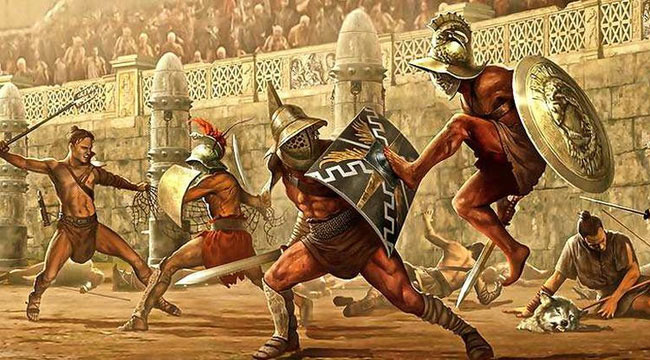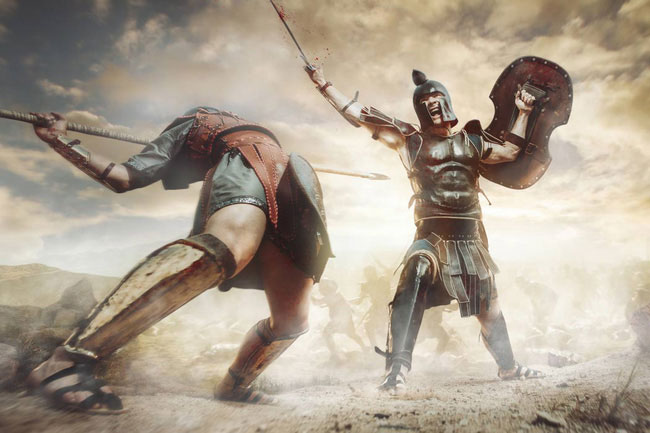According to some records, Roman gladiators appeared as early as 264 BC. Since then, battles between these fighters took place to entertain the audience.
Gladiator in Latin is gladiator. They were individuals who participated in bloody and brutal fights to amuse the nobility as well as the common people of ancient Rome.

Gladiators participated in life-and-death battles with other fighters.
Gladiators in Rome were fully armed and engaged in life-and-death combat with other fighters or wild beasts such as tigers, leopards, and bears…
The victorious gladiator in each match would receive rewards such as money, gold, and silver, and most importantly, fame. In contrast, the loser might be killed in the arena or lose wealth, reputation, and health.
Historians have found some documents revealing the history of gladiators. According to these records, this bloody form of entertainment is believed to have originated in 264 BC. At that time, a nobleman named Brutus Pera instructed his two sons to organize a funeral for him as he approached death. Brutus expressed his desire to hold a contest between gladiators in the marketplace to mark his funeral. Consequently, after his death, his sons fulfilled their father’s wishes.
In the following century, battles between gladiators became increasingly popular. Participants were often slaves, prisoners of war, or low-ranking citizens in Roman society seeking to change their fate. Even some nobles in Rome participated in contests with gladiators to showcase their own strength.

Some nobles in Rome also participated in contests with gladiators.
In the following centuries, the battles gradually expanded and became larger in scale. The Romans constructed large arenas with a capacity of thousands of spectators.
As a result, thousands of spectators could witness the “fiery” contests between gladiators or between gladiators and some large, fierce animals such as tigers and leopards. Watching gladiators sweat and bleed in the arena thrilled and excited the audience.


















































